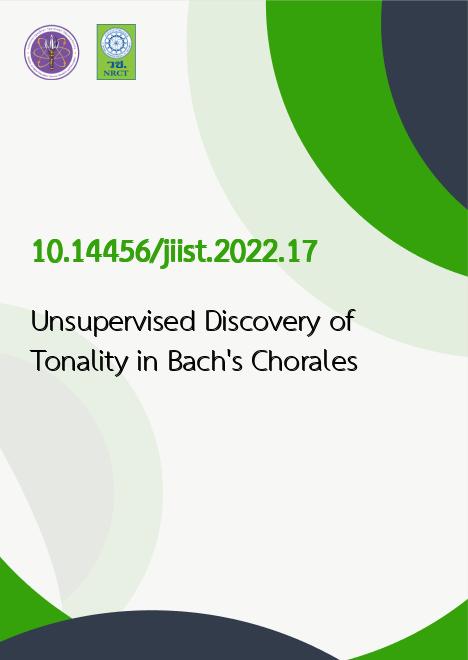
|
Unsupervised Discovery of Tonality in Bach’s Chorales |
|---|---|
| รหัสดีโอไอ | |
| Creator | Yui Uehara |
| Title | Unsupervised Discovery of Tonality in Bach’s Chorales |
| Contributor | Satoshi Tojo, Ryuhei Uehara |
| Publisher | Sirindhorn International Institute of Technology, Bangkadi Campus (SIIT-BKD) |
| Publication Year | 2565 |
| Journal Title | Journal of Intelligent Informatics and Smart Technology |
| Journal Vol. | 8 |
| Page no. | 1-7 |
| Keyword | Unsupervised learning, Neural hidden semi-Markov model, Tonality detection, Sequence clustering |
| URL Website | https://ph05.tci-thaijo.org/index.php/JIIST |
| Website title | Journal of Intelligent Informatics and Smart Technology |
| ISSN | 2586-9167 |
| Abstract | This research aims at finding tonalities in an unsupervised manner, exemplifying J. S. Bach’s four-part chorales. Although the modern tonality of 24 keys was already the mainstream in J. S. Bach’s era, some of the chorales retained the feature of church modes and thus were not written in the same tonal system as current ones. We propose a novel framework for unsupervised learning of mode categories by extending the neural hidden semi-Markov model (HSMM) to a teacher-student learning architecture. While the teacher model equips an elaborated network for calculating the transition probability, the student model simplifies it to a learnable matrix just like a conventional HSMM. We prepare multiple student transition matrices and expect them to represent prototypes of modes. We cluster chord sequences obtained from the teacher model to mode categories by simply comparing the count of chord transitions with the transition probability matrices of students. The student transition probability matrices are tuned by a gradient-based optimizer so as to increase the marginal probability for sequences of observations. Experiments show that the three-students model satisfactorily represents clusters of major, minor, and dorian mode. In addition, tuned student transition matrices are consistent with known chord functions of tonic, dominant, and secondary dominant. |
